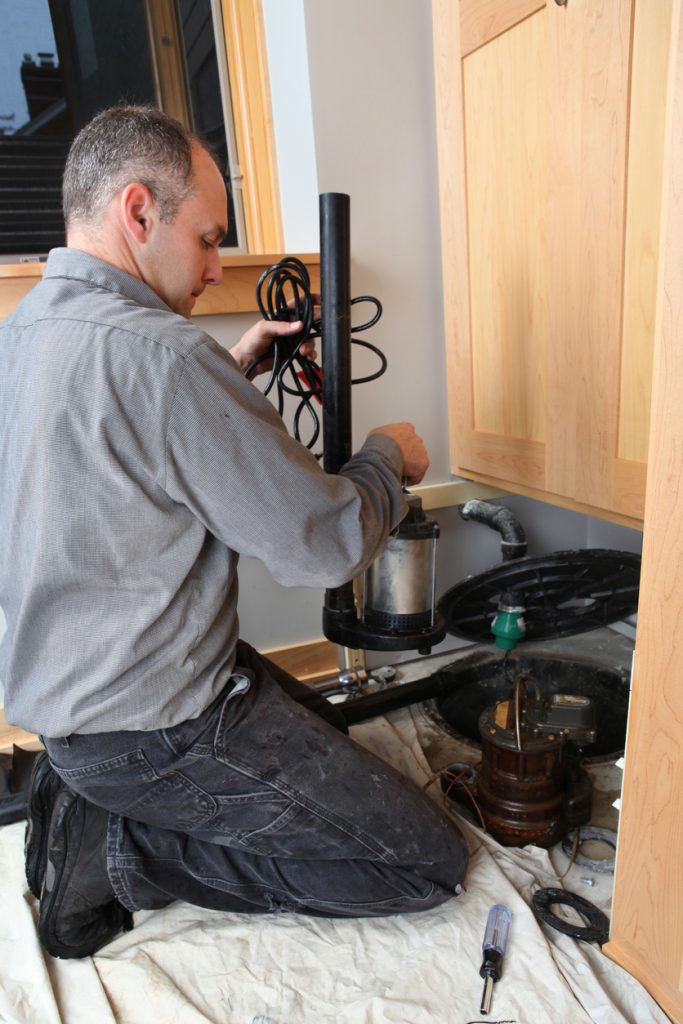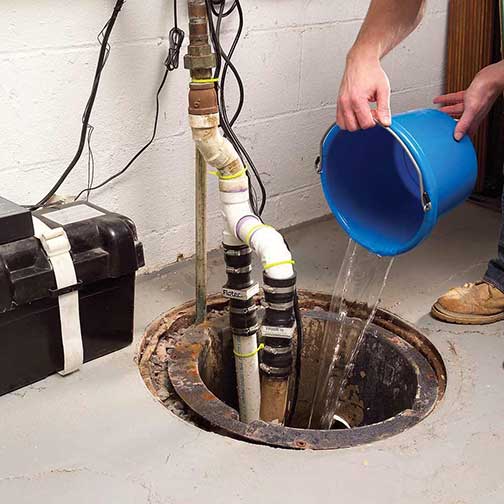Confirmed Methods for Servicing a Sump Pump
Confirmed Methods for Servicing a Sump Pump
Blog Article
Have you been trying to find related information on Cleaning & Maintenance Tips for Your Home's Sump Pump?

Sump pumps are important elements in numerous homes, particularly in locations vulnerable to flooding or too much dampness. They aid protect against water damages by efficiently getting rid of excess water from basements or crawl spaces. However, like any other home appliance, sump pumps require normal upkeep to ensure they function successfully when needed the most. Cleaning your sump pump is a crucial part of its upkeep, and comprehending how to do it effectively can save you from costly fixings and potential disasters.
Introduction
Keeping a tidy sump pump is crucial for its correct functioning and durability. Overlooking this necessary task can result in obstructions, breakdowns, and inevitably, water damage to your residential property. For that reason, learning how to clean a sump pump is essential for house owners who count on these tools to maintain their basements completely dry and secured.
Recognizing the Sump Pump
Before diving right into the cleaning process, it's vital to have a standard understanding of exactly how a sump pump works. Usually installed in a pit or container listed below the basement floor, a sump pump contains several vital elements, consisting of a pump, a float button, and a discharge pipeline. When water builds up in the pit, the float switch triggers the pump, which after that pumps the water out with the discharge pipeline, far from the building's foundation.
Indications of a Dirty Sump Pump
Recognizing when your sump pump needs cleaning is crucial for preventing potential breakdowns. Some common indicators that show a filthy sump pump include strange noises throughout procedure, lowered water flow, and noticeable debris in the pit. If you notice any one of these signs and symptoms, it's essential to cleanse your sump pump immediately to avoid any type of more problems.
Planning for Cleaning
Before you begin cleansing your sump pump, it's necessary to take some safety precautions. Begin by shutting down the power to the pump to avoid any electrical accidents. Additionally, wear appropriate protective equipment, such as handwear covers and safety glasses, to protect yourself from dirt, particles, and potential virus.
Step-by-step Guide to Cleansing a Sump Pump
Turning off the Power
Begin by disconnecting the power supply to the sump pump to prevent any mishaps while cleansing.
Removing Debris and Dust
Make use of a container or an inside story to eliminate any kind of noticeable particles, dirt, or sediment from the sump pit. Dispose of the debris properly to stop it from blocking the pump or the discharge pipe.
Cleaning up the Pump and Drift Switch Over
Once the pit is free from particles, carefully eliminate the pump from the pit. Inspect the pump and the float switch for any type of indications of damage or wear. Utilize a soft brush or cloth to clean up the surfaces and remove any collected gunk.
Flushing the System
After cleaning up the pump and float button, purge the sump pit with clean water to eliminate any type of staying dirt or debris. This will assist make sure that the pump operates efficiently and successfully.
Looking For Proper Performance
Before re-installing the pump, carry out a fast examination to ensure that the float button triggers the pump properly. Put some water into the sump pit and observe the pump's operation. If everything is functioning correctly, you can rebuild the pump and reconnect the power supply.
Upkeep Tips to Keep Your Sump Pump Clean
Along with periodic cleaning, there are several maintenance ideas you can comply with to maintain your sump pump in optimum problem:
Final thought
Cleansing your sump pump is a crucial facet of its upkeep and makes sure that it runs properly when you require it one of the most. By complying with the actions outlined in this guide and including normal upkeep right into your regimen, you can expand the lifespan of your sump pump and secure your home from water damage.
6 STEPS ON HOW TO CLEAN A SUMP PUMP PROPERLY
UNDERSTANDING SUMP PUMPS
Your sump pump plays a crucial role in protecting your home by managing and removing excess water. It primarily functions as a “shield”, guarding your basement against the damaging effects of water accumulation. The pump is housed in a sump pit in the lowest part of your basement, and its job is to pump out any water that collects there.
During heavy rainfalls or when snow melts rapidly, water can infiltrate your basement, posing potential risks like flooding, structural damage, and harmful mold growth. Here, the sump pump springs into action, pumping out the intruding water and directing it away from your home.
SAFETY FIRST
Before cleaning, remember to prioritize safety. Disconnect the sump pump from the power source to prevent any accidental electric shocks. Also, wear sturdy gloves to protect your hands from any sharp or dirty components within the pump.
REMOVE THE SUMP PUMP
After ensuring your safety, the next step is to remove the sump pump from its pit. Doing this might require careful maneuvering as you don’t want to damage any pump components. Once removed, clean the sump pit to remove any accumulated debris or sludge.
INSPECT THE PUMP
Inspect the pump for any visible signs of wear or damage. Check the power cord, float switch, and impeller housing. If any components look worn out or damaged, consider replacing them to ensure optimal performance.
CLEAN THE PUMP
Thoroughly clean the pump with warm, soapy water. Make sure to rid it of any dirt, gravel, or other debris that might impede its performance. You can use a toothbrush to clean the small, hard-to-reach parts of the pump.
REINSTALL THE SUMP PUMP
Reinstall the pump into the sump pit Make sure it’s positioned correctly to remove the water effectively Once it’s back in place, reconnect it to the power source TEST THE PUMP
Finally, pour some water into the pit to ensure the pump works correctly. It should start automatically and begin pumping out the water; if it doesn’t, check the power source and the positioning of the pump.
Remember, while cleaning your sump pump is an essential part of home maintenance, hiring a professional plumber for a thorough inspection and cleaning at least once a year is also important. This will ensure that your pump is in optimal condition, ready to protect your home from potential water damage.
BEST PRACTICES FOR CLEANING SUMP PUMP DISCHARGE PIPES
Regular Inspection: Regularly inspect your discharge pipes, especially during heavy rainfall or snowmelt periods. Look for any signs of blockage or damage. Early detection of problems can prevent serious issues down the line. Periodic Cleaning: Over time, sediment and debris can accumulate in the discharge pipes, impeding the flow of water. Regular cleaning helps keep the pipes clear and functioning efficiently. You can use a high-pressure water jet to effectively clean the pipes. Insulation During Winter: In colder climates, discharge pipes can freeze, blocking the outflow of water. Protect your discharge pipes from freezing temperatures by insulating them with foam pipe insulation. This will ensure the sump pump can continue to discharge water even in freezing conditions. Proper Positioning: The discharge pipe should be positioned to direct water away from your home’s foundation. Improper positioning can lead to water seeping back into the basement. Ensure the pipe is long enough and angled correctly. Installation of a Check Valve: A check valve prevents water from flowing back into your sump pit after the pump has pushed it out. Installing a check valve helps maintain the efficiency of your sump pump and reduces the risk of flooding. Minimize Pipe Turns: Every curve or turn in the discharge pipe can decrease the efficiency of water flow. By minimizing turns and bends in your discharge pipe, you can increase the efficiency of your sump pump. https://www.fullspeedplumbing.com/how-to-clean-a-sump-pump-properly9999/

I stumbled upon that write up on How to Care for Your Sump Pump when perusing the search engines. Liked our blog posting? Please quickly share it. Let others locate it. I praise you for your time. Kindly check up our website back soon.
Call Today Report this page